This question sounds outrageous. Fish live in water and can breathe in water, so how can they drown in water? To understand this problem, we must first study what "drowning" means.
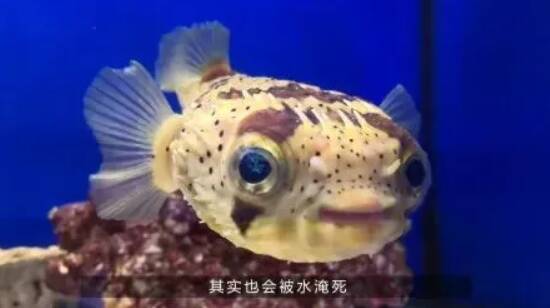
The concept of drowning
Drowning, as we often call it, refers to death caused by various liquids, including water, flooding the face and upper respiratory tract, resulting in loss of respiratory function.
For organisms that need to obtain oxygen from the air (taking mammals as an example), they often actively hold their breath after entering water to prevent water from entering the lungs.
However, this active control of breathing is limited. As the oxygen in the body decreases and carbon dioxide increases, the breathing reflex becomes stronger and stronger until it reaches a certain critical point and the organism can no longer hold its breath on its own. At this point, water (or other liquids) begins to enter the trachea, causing muscle spasms and blocking the airways. If the continued entry of water cannot be prevented, the water will soon reach the lungs and hinder gas exchange in the lungs.

During this process, water entering the lung tissue causes a decrease in alveolar surfactant. Alveolar surfactant is a lipoprotein secreted by alveolar cells (the main component is dipalmitoyl lecithin). It is distributed at the interface between gas and liquid on the alveolar surface and is very important for maintaining the morphology of the alveoli and ensuring gas exchange. When alveolar surfactant is destroyed, gas exchange in the lungs cannot proceed smoothly, resulting in tissue hypoxia and metabolic acidosis. Hypoxemia and acidosis will quickly affect various organs of the body. The brain will lose consciousness due to lack of oxygen, followed by respiratory failure, cardiac arrest, and drowning.
From this perspective, the cause of drowning is that water blocks gas exchange, which in turn leads to hypoxia in the body and death.
So for fish, does water hinder gas exchange?
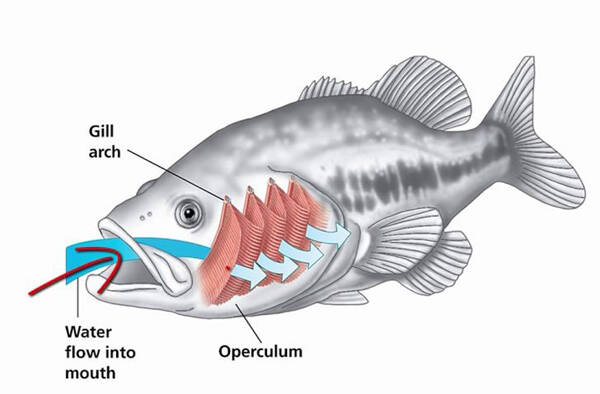
How do fish breathe?
Here we have to talk about the breathing method of fish: most species use gills to breathe, and some species not only use gills to breathe, but also use other breathing methods.
As the most important respiratory organ of fish, the main characteristics of gills are thin walls, large gas exchange area, and rich capillary distribution. The gills are usually arranged symmetrically on both sides of the pharynx, and the gill flaps are attached to the gill septum (cartilaginous fishes) or the gill arch (bony fishes).
For cartilaginous fish (such as sharks), the gill slits usually open directly on the body surface. Under the control of the branchial segment muscles, the gill arches contract and relax rhythmically, allowing water to continuously flow from the mouth through the gill cavity, and then from the gills. Split out of the body. As it flows through the gill slits, oxygen in the water exchanges gases with the blood in the gill vessels.
Bony fish are different. Their gill cavities are covered with operculum bones, and they mainly rely on the movement of the operculum to complete breathing. The direction of water flowing through the gills is opposite to the direction of blood flow, forming a counter-current exchange, and the efficiency of uptake of oxygen is very high.
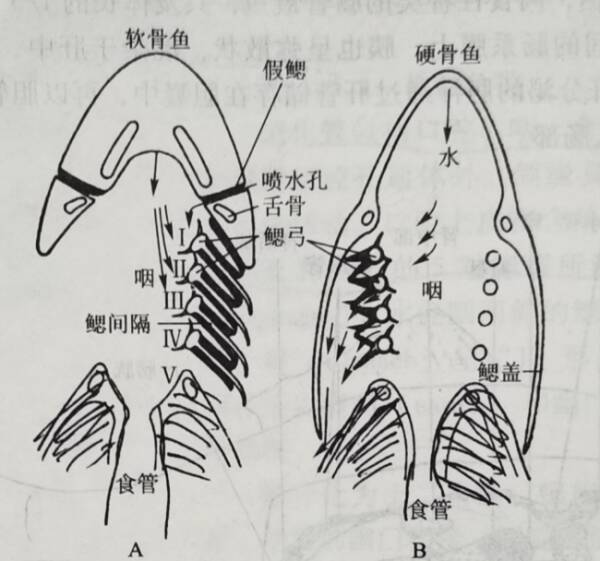
The difference between the gills of cartilaginous fish (A) and bony fish (A), picture source "General Zoology"
In addition to breathing through gills, some bony fish have also developed adaptive special breathing methods. For example, eels and mudskippers can breathe through the skin; loaches can breathe through the intestines; bettas and snakeheads can breathe through the epibranchial apparatus; lungfish can breathe through the swim bladder. (a sac-like organ located at the back of the intestine in fish) breathing and more.
For fish that rely on gills to obtain oxygen from the water, the water itself does not hinder gas exchange. From this perspective, fish that use gills to breathe will not "drown."
However, some fish rely very little on their gills and mainly obtain oxygen from the air. Water is not so friendly to them. One of the more extreme examples is the Brazilian bonefish (Arapaima gigas).
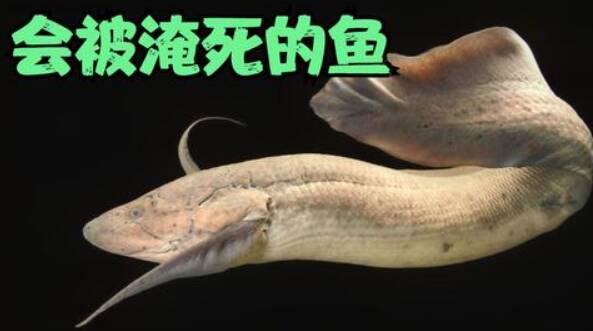
The living environment of the Brazilian bonefish is a bit special. During the dry season, the water is often filled with decaying organic matter and the oxygen content is very low. In order to get enough oxygen, the Brazilian Osteoglossus had to develop a special skill - getting oxygen from the air. They use a swim bladder (in fact, the swim bladder and the lungs are homologous, and existing evidence shows that the swim bladder is likely to have evolved from primitive lungs), but the role of the gills has gradually been lost, so that almost 80% of the oxygen supply comes from the air.
In this way, the Brazilian Osteoglossus not only perfectly adapted to the hypoxic living environment, but also unlocked the ability to survive for a period of time without water. But everything has two sides. The Brazilian bonefish relies so much on air that it has to surface for air every once in a while, otherwise it will "drown."
Fish can also lack oxygen in water
If we define "drowning" as death from lack of oxygen, then in addition to extreme cases like the Brazilian Osteognathus, other fish may also suffer in the water. There are two main reasons for the lack of oxygen in fish in the water. One is the lack of oxygen in the water itself, and the other is the disease of the fish themselves.
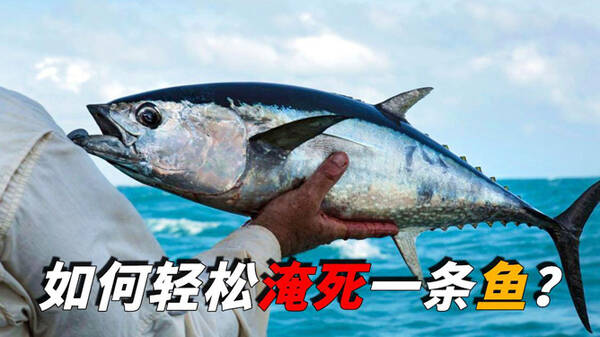
We are all familiar with the situation of hypoxia in water bodies. For example, before it rains, the fish in the pond always come to the surface to breathe. This is because there is not enough oxygen in the water. In addition, when raising fish at home, you usually need to prepare an oxygen pump. Prevent fish from hypoxia.
Factors such as air pressure and water temperature may cause changes in the oxygen content of the water. However, it is generally not serious enough to suffocate fish to death, but phenomena such as "red tide" can be really fatal. When a "red tide" occurs, organic matter in the water increases significantly, and aerobic bacteria proliferate, consuming the little oxygen in the water (the oxygen content in the water is far less than that in the air), and fish and shrimp will suffocate and die.
In addition to environmental factors, fish illness may also cause the fish to be unable to breathe. A typical example is gill rot. The ends of the diseased fish's gill filaments are rotten, congested, and breathing is blocked. If not treated in time, the fish will not be able to breathe even if there is sufficient oxygen in the water, and will eventually suffocate and die.
From this point of view, it does not seem impossible for fish to drown in water.
animal tags: fish
We created this article in conjunction with AI technology, then made sure it was fact-checked and edited by a Animals Top editor.